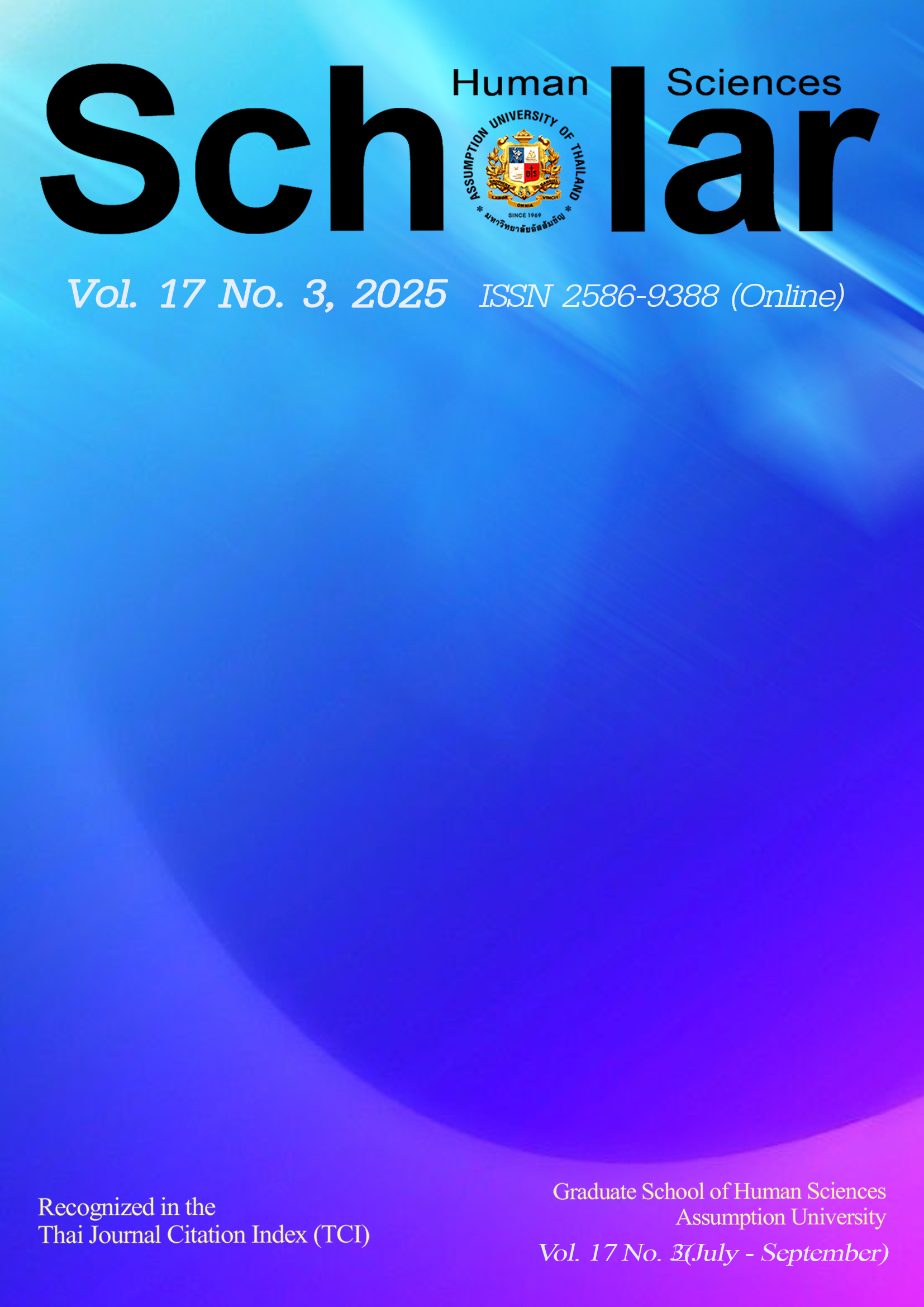Assessing Posttraumatic-Stress Disorder Symptoms among Former Rebels: Basis for Mental Health Care Intervention
DOI:
https://doi.org/10.14456/shserj.2025.63Keywords:
Mental Health, Psychosocial Well-being, RehabilitationAbstract
The study investigates the socio-demographic characteristics and psychosocial health profile of the former rebels in terms of posttraumatic-stress symptomatology. It also aimed to identify the psychopathological risks as bases of its proposed mental health treatment. This study utilized a sequential explanatory mixed methods design which employed the Posttraumatic Diagnostic Scale- Self Report for the DSM5 in assessing the participants’ psychosocial health condition. A semi-structured, in-depth individual interview was also conducted to gather qualitative data. There were 30 respondents in the quantitative phase of the study, they were the beneficiaries of the Philippine Enhanced Comprehensive Livelihood Integrated Program, based in a local government unit. Upon determining the psychopathological risks of the respondents, five were identified to have suffered the highest severity symptoms of PTSD, who were then the participants in the qualitative phase. Results reveal that all former rebels who participated in the study suffer from Posttraumatic Stress Disorder which necessitates proper psychological treatment to restore and rebuild their quality of life. The findings show that the former rebels’ mental health needs have to be properly addressed during their rehabilitation period before they are being mainstreamed in the society. Relevant policy and programs need not to overlook the former rebels’ psychosocial well-being.
References
Basoglu, M., Livanou, M., Crnobaric, C., Franciskovic, T., Suljic, E., & Duric, D. (2005). Psychiatric and cognitive effects of war in former Yugoslavia: Association of lack of redress for trauma and posttraumatic stress reactions. Journal of the American Medical Association, 294(5), 580-590.
Carandang, M. L. (1996). Pakikipagkapwa-damdamin: Accompanying survivors of disasters. Makati City.
Crisis Group Asia Report N202. (2011). The communist insurgency in the Philippines: tactics and talks. International crisis group working to prevent conflict worldwide.
Eck, K., & Hultman, L. (2007). One-Sided Violence Against Civilians in War: Insights from New Fatality Data. Journal of Peace Research, 44(2), 233-246. https://doi.org/10.1177/0022343307075124
Elbert, T., Weierstall, R., & Schauer, M. (2010). Fascination violence: on mind and brain of man hunters. European archives of psychiatry and clinical neuroscience, 260(2), 100-105. https://doi.org/10.1007/s00406-010-0144-8
Foa, E. B., & Tolin, D. F. (2000). Comparison of the PTSD Symptom Scale-Interview.
Freedy, J. R., & Donkervoet, J. C. (1995). Traumatic Stress: An Overview of the Field. Havard Mokleiv Nygard.
Happy Home Manual. (2013). Davao Oriental.
Ilagan, G. (2010). War wounded: Combat stress sequelae of 101D soldiers. Ateneo de Davao University
Janoff-Bulman, R., & Berg, M. (1998). Disillusionment and the creation of value: From traumatic losses to existential gains. In J. H. Harvey (Ed.), Perspectives on loss: A sourcebook (pp. 35-47). Brunner/Mazel.
Joseph, S., Dalgleish, T., Thrasher, S., & Yule, W. (1997). Impulsivity and post-traumatic stress. Personality and Individual Differences, 22(2), 279-281
Ladrido-Ignacio, L. (2011). Basic framework: Transformation of victims of disasters to survivors. In L. Ignacio (Ed.), Ginhawa (pp. 120-156). Quezon City, Philippines: Flipside Digital Content Company, Inc.
MacManus, D., Dean, K., & Jones, M. (2013). Violent offending by UK military personnel deployed to Iraq and Afghanistan: a data linkage cohort study. The Lancet, 381(9870), 907-917. https://doi.org/10.1016/S0140-6736(13)60354-2
Maedl, A., Schauer, E., Odenwald, M., & Elbert, T. (2010). Psychological rehabilitation of ex-combatants in non-western postconflict settings. In Trauma rehabilitation after war and conflict (pp. 177-214). Springer.
Maynard, A. (1997). Evidence-based medicine: an incomplete method for informing treatment choices. The Lancet, 349(9045), 126-128
Mogapi, N. (2004). Reintegration of soldiers: The missing piece. International Journal of MentalHealth, Psychosocial Work and Counselling in Areas of Armed Conflict, 2(3), 221-225.
Neuner, F., Schauer, M., Karunakara, U., Klaschik, C., Robert, C., & Elbert, T. (2004). Psychological trauma and evidence for enhanced vulnerability for posttraumatic stress disorderthrough previous trauma among West Nile refugees. BMC psychiatry, 4, 34.
Osleson, J. (2007). Protracted People’s War in the Philippines: A Persistent Communist Insurgency. California Philippines.
Prasad, M. (2015). Why is the Membership of the New Peoples Army 70% Lumad?. Historical Context, Causes, and Recommendations (Middlebury Institute of International Studies.
Yacat, J. (2013). Filipino Psychology (Sikolohiyang Pilipino). The Encyclopedia of Cross-Cultural Psychology,
Downloads
Published
How to Cite
Issue
Section
License
Copyright (c) 2025 Rose Anelyn Ceniza

This work is licensed under a Creative Commons Attribution 4.0 International License.
The submitting author warrants that the submission is original and that she/he is the author of the submission together with the named co-authors; to the extend the submission incorporates text passages, figures, data, or other material from the work of others, the submitting author has obtained any necessary permission.
Articles in this journal are published under the Creative Commons Attribution License (CC-BY What does this mean?). This is to get more legal certainty about what readers can do with published articles, and thus a wider dissemination and archiving, which in turn makes publishing with this journal more valuable for you, the authors.




